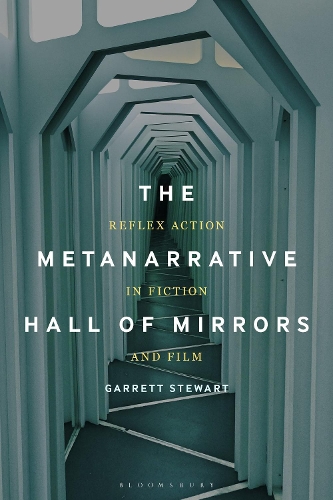
The Metanarrative Hall of Mirrors: Reflex Action in Fiction and Film
(Hardback)
Available Formats
Publishing Details
The Metanarrative Hall of Mirrors: Reflex Action in Fiction and Film
By (Author) Professor or Dr. Garrett Stewart
Bloomsbury Publishing PLC
Bloomsbury Academic USA
2nd June 2022
United States
Classifications
Professional and Scholarly
Non Fiction
Literary studies: fiction, novelists and prose writers
Film history, theory or criticism
808
Physical Properties
Hardback
240
Width 152mm, Height 229mm
Description
With its laser-focus on the verbal and visual infrastructure of narrative, The Metanarrative Hall of Mirrors is the first sustained comparative study of how image patterns are tracked in prose and cinema. In film examples ranging from Citizen Kane through Apocalypse Now to Blade Runner 2049, then on to Christopher Nolans 2020 Tenet, Garrett Stewart follows the shift from celluloid to digital cinema through various narrative manifestations of the image, from freeze-frames to computer-generated special effects. By bringing cinema alongside literature, Stewart discovers a common tendency in contemporary storytelling, in both prose and visual narrative, from the ongoing trend of mind-game films to the often puzzling narrative eccentricities of such different writers as Nicholson Baker and Richard Powersincluding the latters eerie mirroring of reader empathy in his 2021 Bewilderment.
Reviews
The central question of this brilliant, often surprising book is what a text, whether verbal or visual, really has on its mind. This ingredient is not the same as what the text says or means or even has in mind. It is what readers and viewers meet when the text talks to itself or about itself, and Professor Stewart leads us through a whole array of films and novels where amazing versions of that talk take place. Whats more, Professor Stewarts own style actively models the attentive curiosity it recommends. * Michael Wood, Professor Emeritus of English and Comparative Literature, Princeton University, USA *
The Metanarrative Hall of Mirrors takes the once-exciting notion of the meta or reflexive text in new and, yes, exciting directions. In demonstrations brilliantly capturing both the immediacy and the takeaway of reception, Stewart shows how the work of artbe it a popular film or novelistic tour de forceis precisely that: an activity, an event, where reading itself is paramount and transcendent. * William Galperin, Distinguished Professor of English, Rutgers University, USA *
With Metanarrative Hall of Mirrors that peerless verbal acrobat/analyst Garrett Stewart has given us a new feast of words and images, a new experience of aesthetic bliss (borrowing from Nabokov) in the continuing reflexive kick of the metatextual turn. The canny linguistic density he finds in maximalist novelist Richard Powers - one of the books principal figures, along with another sentence-dedicated writer minimalist Nicholson Baker and cinematic masters of the reflexive such as Bergman and Fellini - is mirrored in Stewarts nearly uncanny attunement to phrasal intertwine and echo in the rhyming poetry of prose itself. Viscerally engaged with the material presence of words and images, Stewart always lets his thinking be tested on the pulse of our attention. The result is that readers will come away from this book with a consciousness of reading and viewing quickened and delighted by a vastly enlarged understanding of their own contributory work in the energizing of prose and image. A dazzling performance from a critic whose powers of noticing are nothing short of exhilarating. * Ross Posnock, Anna S. Garbedian Professor of the Humanities, Columbia University, USA *
Author Bio
Garrett Stewart is the James O. Freedman Professor of Letters at the University of Iowa, USA, having previously held teaching appointments at Boston University, the University of California at Santa Barbara, Stanford University, Princeton University, and the Universities of London (Queen Mary), Konstanz, and Fribourg (Switzerland). He is the author of 18 books, including Novel Violence (2009), which was awarded the Perkins Prize for the best book on narrative (International Society for the Study of Narrative), and Between Film and Screen (1999), which was a short-listed finalist for the Kraszna-Krausz Moving Image Book Award. In 2010 he was elected to the American Academy of Arts and Sciences.
